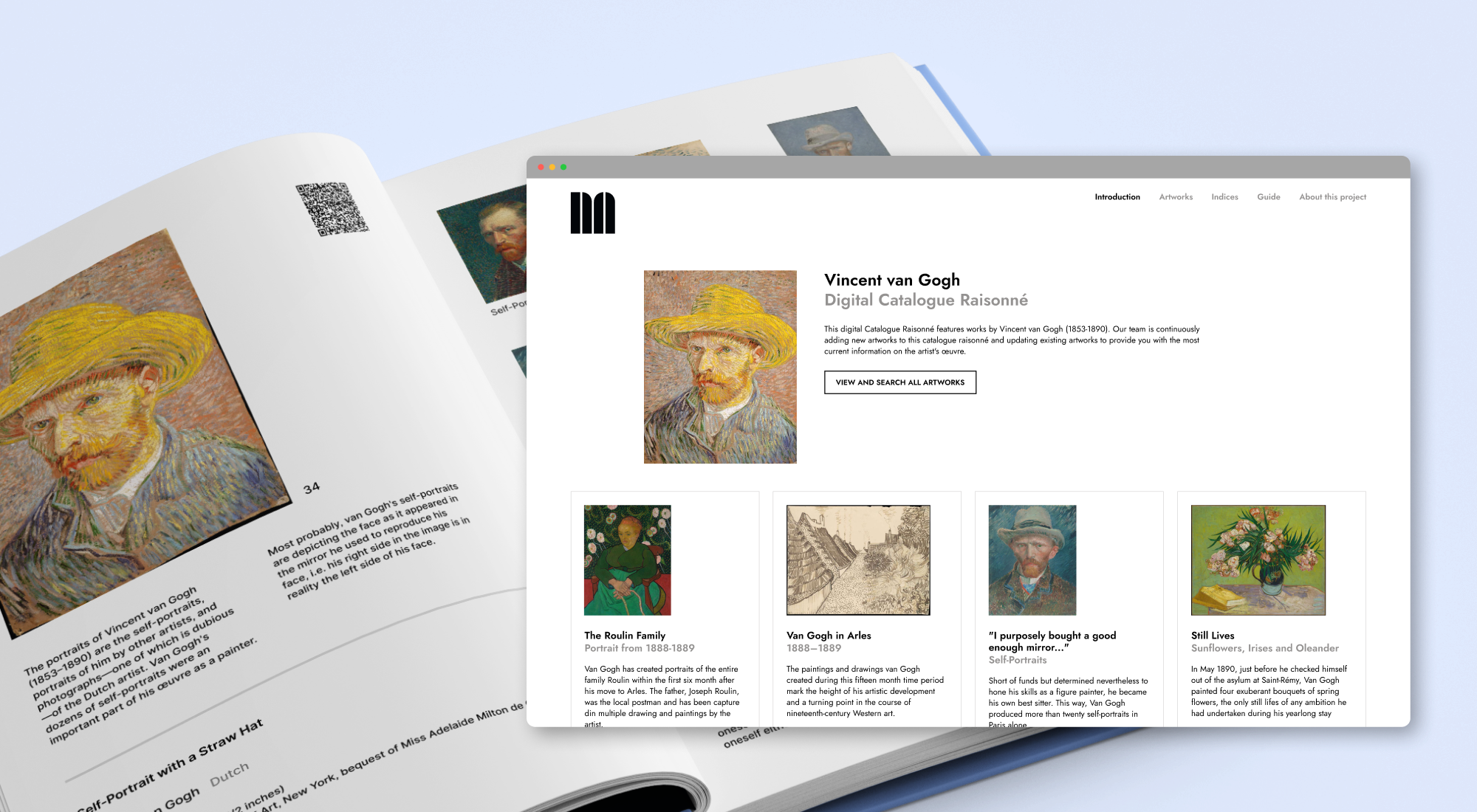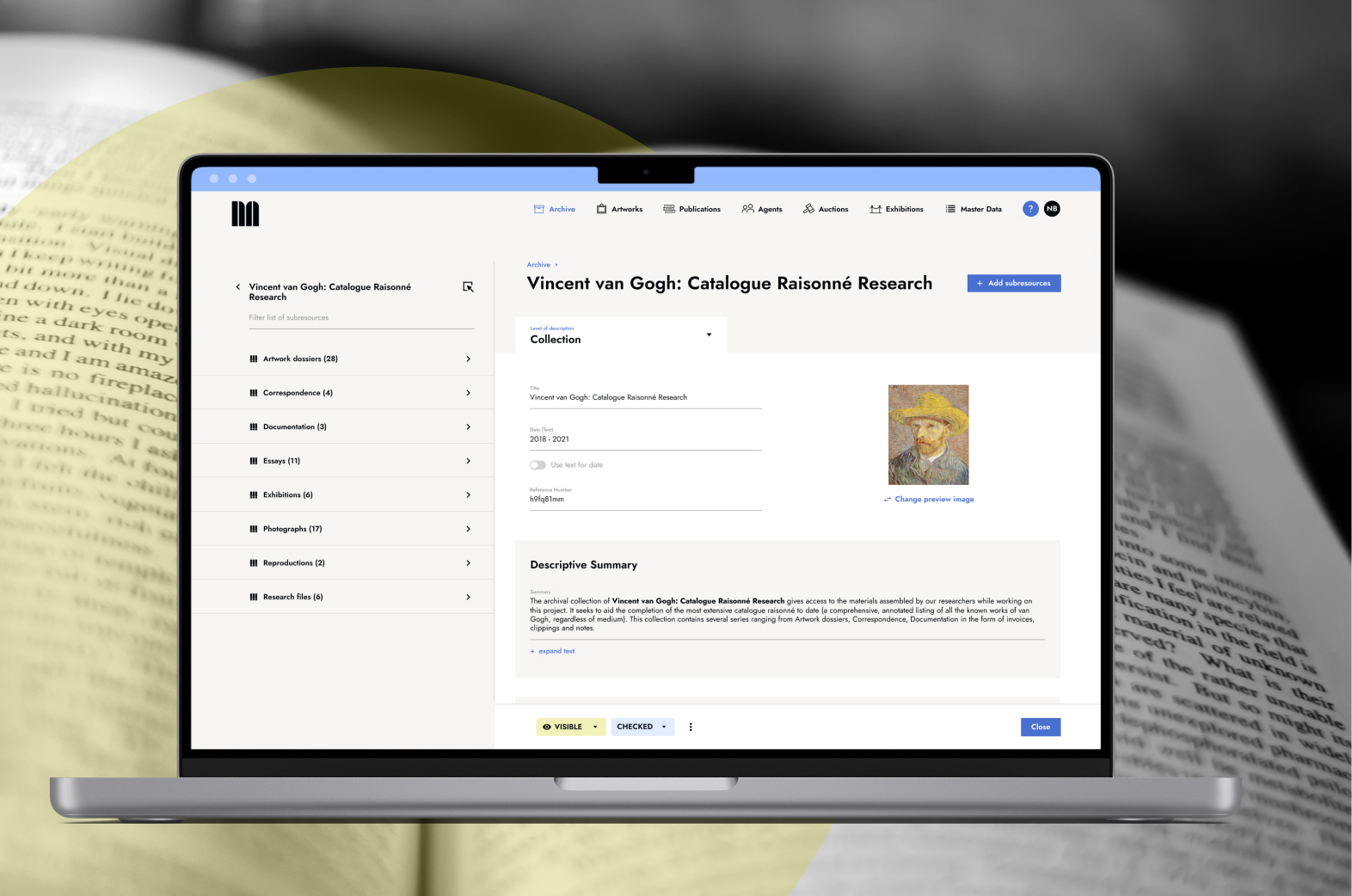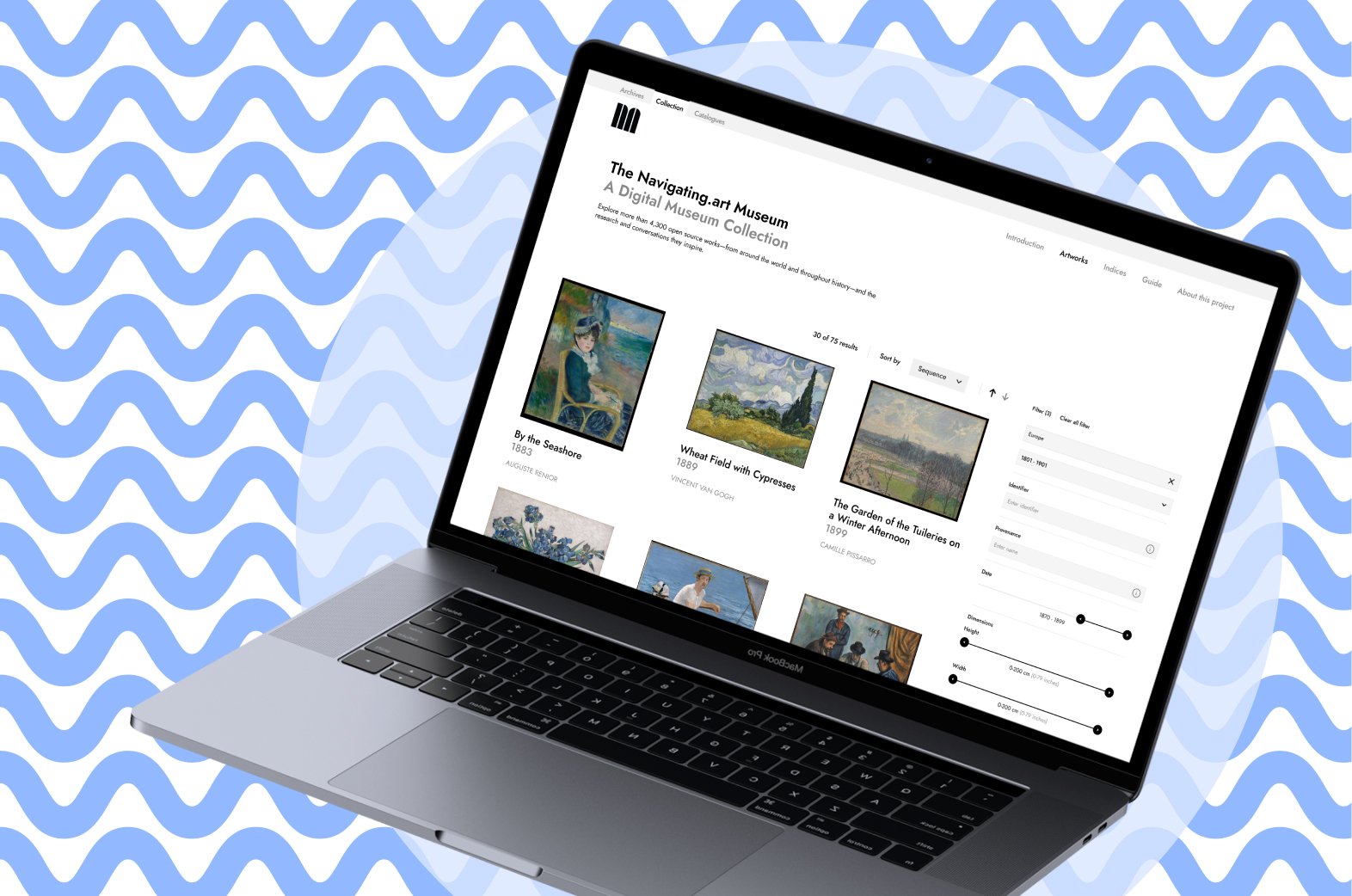How AI empowers scholarship and digital catalogues raisonnés
There’s no denying that art professionals approach Artificial Intelligence (AI) with a healthy dose of skepticism. Whatever the application, AI prompts a wide array of questions and concerns – from data protection to bias, ethics, and fairness. For academics, two fundamental flaws stand out: the tendency of AI to plagiarize human ideas and to make up false information. If AI has no moral compass, cannot discern fact from fiction, and struggles to credit people for their hard work, what possible use value can it offer human researchers?
Each AI-generated image or word is always a human-machine collaboration because it relies on specific human input and edits. The bot-generated data that AI now trains on was originally created by humans, and when it comes to auditing, humans always have the final say. In fact, AI’s reliance on humans to provide content and feedback to generate meaningful outcomes is where its greatest potential lies. Combining human knowledge and expertise with an AI technology’s proficiency (such as language models or pattern recognition) can be a powerful combination.
The Navigtaing.art team has created collaboration tools that remove drudgery from scholarly work. It’s dedicated to applying AI technologies to enhance the skills that academics and researchers already have.
What is AI anyway?
Before getting into the ways that Navigating.art uses AI to empower scholarship, let’s define a few key concepts. After all, many definitions for AI exist. Here’s the one that the team at Navigating.art work with: AI is the use of computer software to analyze large amounts of data and solve problems, following an interpretation of human reason. Unless stated otherwise, this article uses this form of AI as a blanket term for all technologies referenced.
Another technology that it's important to outline at this stage is Machine Learning (ML). ML is a type of AI. ML uses algorithms trained on data to produce computer models, which simulate the process of human learning. These models allow a computer to perform specific tasks and “learn” from its interactions so that it can improve its performance the next time. Many of the current applications of AI found in museum work function according to the principles of ML. Specific ML technologies are defined throughout.
Using AI to enrich research for a digital catalogue raisonné
Society needs knowledge workers to continue to question its most complicated and controversial aspects. With AI tools, researchers can ask more questions, find the right materials, and speed up collection research processes. Here’s how Navigating.art incorporates AI to assist researchers in doing what they do best.
Structure data for the best results
Fruitful research starts with preparing findable and usable data. Many museums already use AI techniques to structure and enhance collection information. One familiar example is Optical Character Recognition (OCR). Researchers use OCR to process collection information and produce searchable text files for each piece of source material. OCR uses computer vision to extract meaning from visual media – converting image-based text into machine-readable words. Leveraging AI to enrich collection metadata sets researchers up for success.
Locate information intuitively
Users will search for information using terminology that is familiar to them. It’s up to collection managers to ensure high-quality data is discoverable and reusable. AI technologies can help them. Large Language Models (LLMs) rely on neural networks to read vast amounts of text, spot patterns, and make predictions about what word comes next. This trait makes them a helpful search aid because it understands the relationships between different words. LLMs provide plausible responses to input questions, making them a handy tool for researchers to obtain an initial understanding of the data available to them.
Search for answers to natural language questions using the Navigating.art platform. Don’t waste time translating queries into keywords or jargon.
Unlock a world of information
If a researcher has ever used an online translation tool, they’ve likely used AI. Natural Language Processing (NLP) combines AI, ML, and linguistics to make human text and speech legible to machines. Digital translators use NLP to convert one language into another. The heritage sector is vast and international. People who work in the sector often encounter materials in languages unfamiliar to them. AI tools with built-in NLP eliminate the need for external translators and make original sources available to more people.
Navigating.art’s chat tool allows researchers to search collections according to their chosen vernacular and access sources in any language.
Enliven the research process
Research is sometimes a lonely business that often requires trawling through piles of irrelevant information. Searching with keywords can feel endless. What if a researcher could converse with source materials to find the needed information? With NLP, researchers can ask exploratory questions of collection resources and receive natural language responses. Formulating follow up questions refines the process. Expanding on key points and verifying uncertainties has never been so fun.
Get to know sources like never before with Navigating.art’s chat tool. Ask questions of publications and yield answers in an instance.
Share collection information far and wide
As the use of AI tools – trained on information available on the internet – proliferates, the need for greater public access to vetted information increases. Contribute to the open-access ecosystem by releasing public datasets. Opening up collections to more people increases access to information and facilitates research across a range of sources and stories held in different physical locations. Give AI accurate data to work with and boolster AI-enhanced research.
Turn on public access to collection information in the click of a button with Navigating.art’s robust and secure access features. Bring that beautifully structured and enriched data to the world.
For a digital catalogue raisonné, focus on the research
It’s time to let technology care for the data and let humans focus on what humans do best: critical thinking and generating new ideas. Navigating.art strives to do just that and wants to collaborate with researchers to design AI features that further advance their work.
Speak to a digital humanities expert to learn more.


